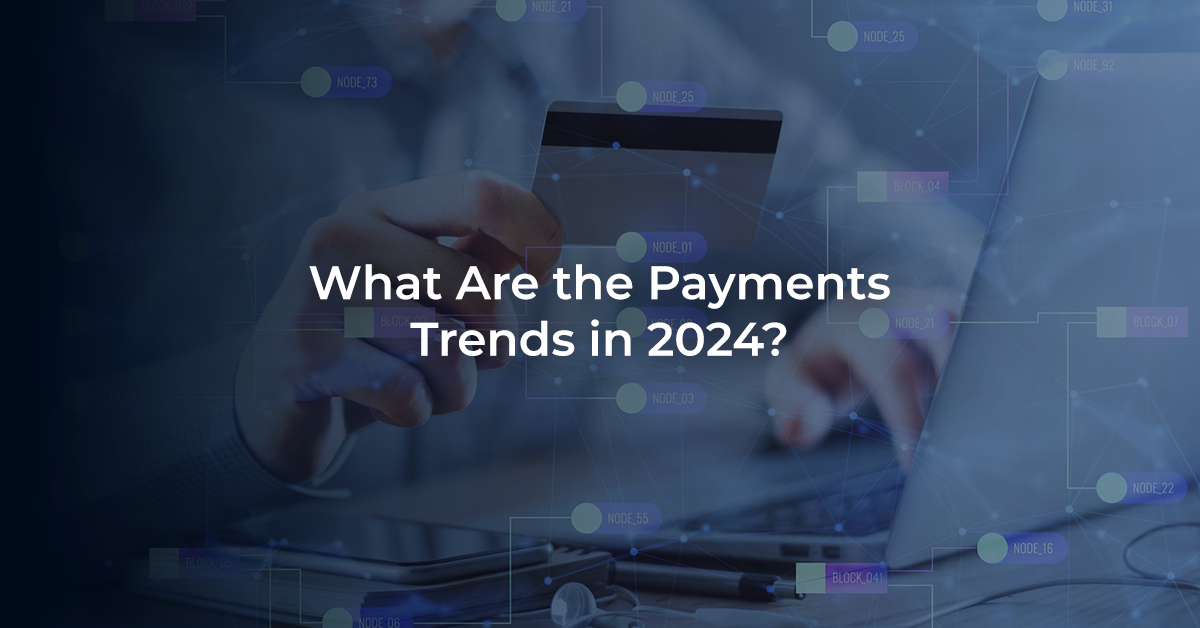
What Are the Payments Trends in 2024
The two broad predominant trends in the payments industry in 2024 are improving customer experience and globalization. While the cross-border transactions are supported by regulatory frameworks to facilitate the implementation of new payment solutions and enable frictionless and real-time transactions internationally, the customer-centric approach is still one of the most highlighted topics of 2024 as the positive payment experiences are closely related to the spending behaviours of the consumers. Businesses and financial institutions focus on the adoption of new customer-friendly and personalized payment solutions to increase customer satisfaction and loyalty. Therefore, the main payment trends of 2024 are shaped around internationalization, technological innovations and enhancing customer experience themes.
1. Card Tokenization for Frictionless Payment Flows
Although originally developed for the prevention of fraud, tokenization has started to be used as a critical tool in reducing disruptions in payment flows. As a possible and effective solution to cases when digital consumers neglect to update their credit card information, tokenization provides persistence of service by securely storing and automatically updating payment information upon expiration, which makes it particularly beneficial for repetitive payments and subscription models. Tokenization also enhances customer retention and company revenues by helping increase authorization rates.
2. Continuous Rise of Cross-Border Payments
International transactions proceed to expand in an unceasable pace as the global e-commerce industry is directed toward cross-border transactions increasingly. Together with this international focus, the new payment solutions to improve the service, pace, and experience are given higher priority by businesses and regulators. In order to minimize the friction and achieve a cross-border payments landscape that would satisfy the expectations of the customers and businesses, several initiatives including digital wallets are taken by various stakeholders in the global payments industry.
3. Alternative Payment Methods and Digital Wallets
Alternative payment methods (APMs) and digital wallets are aggressively expanding their share in the market by growing their transactional volume each day. Consumers noticeably prefer these methods as they are capable of delivering tailored and flexible shopping experiences that boost the loyalty of consumers and support businesses. Adoption of the APMs is also favored by the official institutions including the EU with their digital wallet initiative to be used in the EU for the purpose of creating a more unified payments environment in the EU.
4. Rise of Open Banking and Instant Payments
The emergence and rise of open banking along with other new entities entering into the payments industry gave way to the growth of instant payment promising higher transparency and enhanced efficiency while minimizing the cost of processing the transactions. In Europe, a significant amount of money transfers within the SEPA area is conducted via instant payments and they are expected to grow further, especially in account-to-account (A2A) transactions. These advancements are revolutionizing the payment landscape as they provide real-time payment capabilities that will answer the speed and safety expectations of the consumers of the digital age.
5. Fraud Prevention and Security Efforts
The payments sector has been under pressure to increase its investments in cutting-edge security measures due to the persistent threat of online fraud and the daily emergence of new fraud schemes. It is anticipated that new techniques like Transaction Risk Analysis (TRA) and Generative AI would strengthen efforts to avoid fraud and enhance fraud detection tools. These new technologies are showing promise not only for increased security but also for expediting and optimizing payment authentication processes, which will ultimately lead to increased payment transaction efficiency and client trust.
6. AI Integration in Payments Landscape
Even though artificial intelligence (AI) technology reached its peak in 2023, it is anticipated to play an even more significant role in the payments sector in 2024 as it advances new innovations in fraud control, cash flow forecasting, authentication, and customer service automation. Businesses and financial institutions can streamline their transaction processes and provide personalized services to their consumers, increasing engagement and loyalty, thanks to AI-based technologies and solutions that have been adopted by the payments industry. All parties involved in the payments sector must integrate AI-powered solutions into their systems in order to keep up with the constantly changing demands and trends of the digital economy.
7. Evolution in Commerce: Omnichannel and Embedded Banking
The trend of omnichannel experiences in commerce evolution as a result of the increasing demand for modernized commerce experiences by consumers is reshaping payment strategies. The financial businesses, to meet these expectations, are integrating physical and digital channels using features such as embedded banking and alternative payment methods to offer seamless shopping experiences for their customers. To close the gap between online and offline shopping experiences, businesses are constantly seeking different payment solutions to provide an omnichannel experience including tap-to-pay and biometric identification.
The concept of embedded banking is a new emerging trend in the finance industry that enables businesses to implement financial services into their non-financial platforms. The main benefit of this integration is to upgrade customer experience by opening up the possibility of creating a seamless payment and account management experience within the already existing services. Embedded banking is carrying a big growth potential as it promises to drive new revenue streams and help emerge new business model innovations signaling significant support in the expansion of the market.
To conclude, 2024 holds great potential to be a significant year in the payments sector, marked by innovative and game-changing developments that revolve around internationalization, improved customer experience, and technology advancements. The payments ecosystem’s players must have a thorough understanding of these developments in order to act strategically and seize chances for expansion and uniqueness in a crowded industry. Through the adoption of innovative technologies such as tokenization and artificial intelligence (AI), prioritizing customer-focused solutions, and accepting regulatory advances, businesses can maintain a competitive edge in the always changing payments landscape.
Murat Kurtulmuş, Implementation & Support Director

